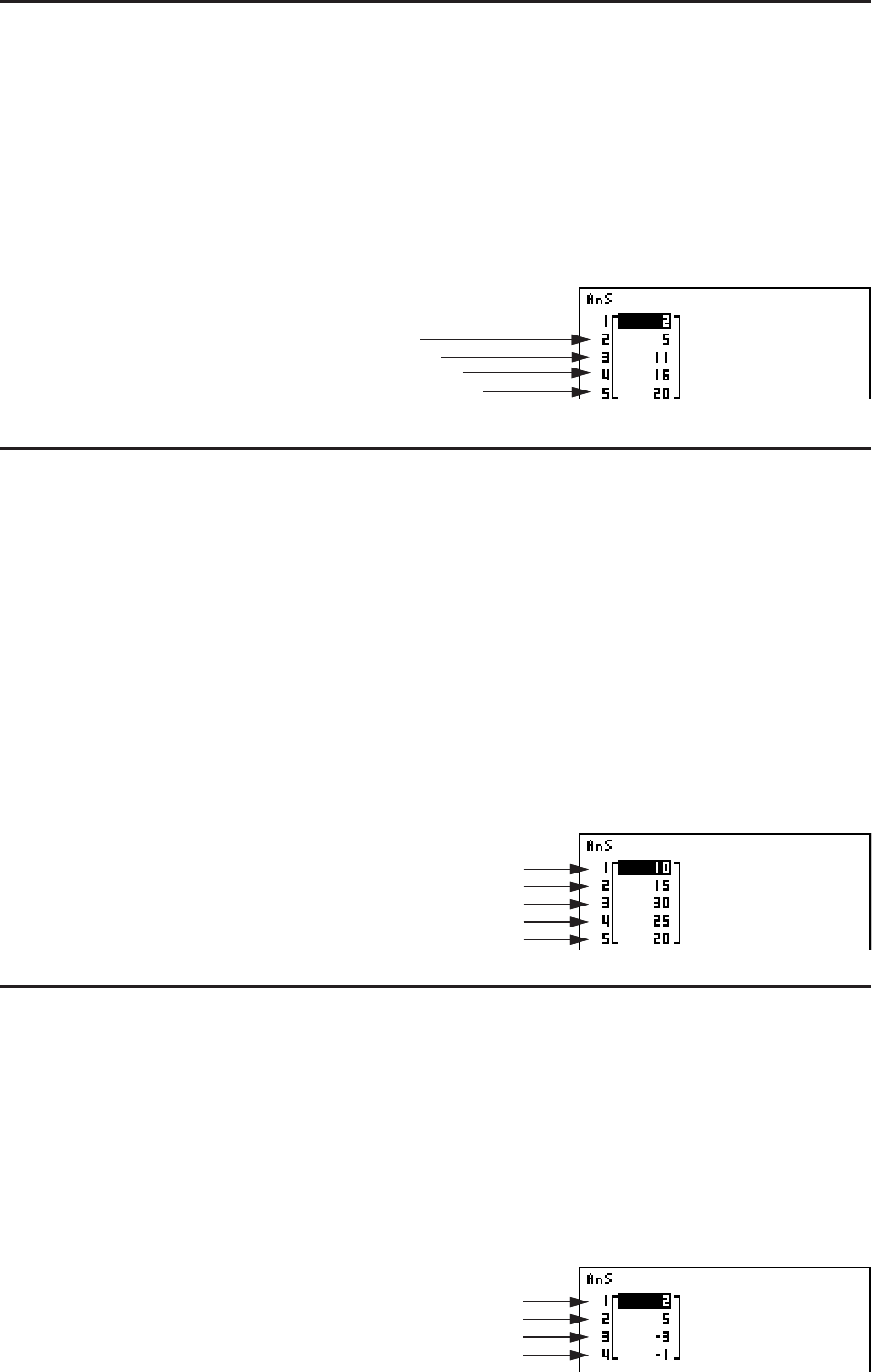
3-9
S To calculate the cumulative frequency of each data item [OPTN]-[LIST]-[Cuml]
*(LIST)(E)(E)(Cuml)(E)(List) <list number 1 - 26> U
• The result of this operation is stored in ListAns Memory.
Example To calculate the cumulative frequency of each data item in List 1
(2, 3, 6, 5, 4)
*(LIST)(E)(E)(Cuml)
(E)(List)@U
S To calculate the percentage represented by each data item [OPTN]-[LIST]-[%]
*(LIST)(E)(E)(%)(E)(List) <list number 1 - 26> U
• The above operation calculates what percentage of the list total is represented by each data
item.
• The result of this operation is stored in ListAns Memory.
Example To calculate the percentage represented by each data item in List 1
(2, 3, 6, 5, 4)
*(LIST)(E)(E)(%)
(E)(List)@U
S To calculate the differences between neighboring data inside a list
[OPTN]-[LIST]-[ ]
*(LIST)(E)(E)( ) <list number 1 - 26> U
• The result of this operation is stored in ListAns Memory.
Example To calculate the difference between the data items in List 1 (1, 3, 8, 5, 4)
*(LIST)(E)(E)( )
@U
2+3=
2+3+6=
2+3+6+5=
2+3+6+5+4=
2+3=
2+3+6=
2+3+6+5=
2+3+6+5+4=
× 100 =2/(2+3+6+5+4)
3/(2+3+6+5+4) × 100 =
6/(2+3+6+5+4) × 100 =
5/(2+3+6+5+4) × 100 =
4/(2+3+6+5+4) × 100 =
× 100 =2/(2+3+6+5+4)
3/(2+3+6+5+4) × 100 =
6/(2+3+6+5+4) × 100 =
5/(2+3+6+5+4) × 100 =
4/(2+3+6+5+4) × 100 =
3 – 1 =
8 – 3 =
5 – 8 =
4 – 5 =
3 – 1 =
8 – 3 =
5 – 8 =
4 – 5 =


















